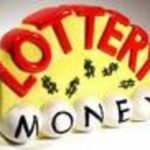There is no doubt that there is a price for convenience, but some convenience stores price many products fairly similarly to other stores. Convenience stores today, however, are not the convenience stores of the past. While convenience stores of the past often had relatively little traffic and extremely high prices on products that sometimes had dust on them, today’s convenience stores are often high-traffic stores with daily deliveries and, apparently, the understanding that dust doesn’t move products.
Convenience stores, often known for the cigarettes and lottery tickets they sell (for the same price as others do) often sell bread (which is often priced by the manufacturer, with that price on the wrapper) for the same price as other stores sell it.
Milk is another product that may have a price very similar to its price at other stores. There may or may not be a slightly higher price at convenience stores, but it is usually not a big price difference.
When convenience stores offer brand name paper products like paper towels, bathroom tissue, facial tissues, or and coffee filters) the price can be close to double the price charged by other stores. Some convenience stores, however, offer inexpensive, lower-quality, paper products at a price more comparable to the price of brand-name items in other stores.
Canned food will almost certainly be priced substantially higher at convenience stores. Based on my unscientific “research”, in general, it appears that canned foods that would cost a dollar or less at a larger grocery store generally cost approximately twice as much at convenience stores – sometimes slightly more. Coffee and tea can be substantially higher in convenience stores. The same brand/size can of coffee that would cost about three dollars at a larger store can cost in the area of five dollars (or slightly higher) at a convenience store. With limited shelf space, convenience stores may sell items like tea in the smallest packages but charge as much as three times what a larger store would.
Refrigerated foods and dairy products (other than milk) are generally priced higher than they are in larger stores, but they’re also priced to sell – so the price difference isn’t as substantial as it is for something like frozen foods, which last a long time in the freezer.
In general, if what you need at a convenience store is something a lot of other people often also need, the price difference will be smaller. That rule does not, however, apply to non-food items. Things like personal products, diapers, medicines, and auto products (oil, brake fluid, windshield-wiper fluid). These items have substantial (and sometimes shocking) price differences, presumably because the person who is looking to buy deodorant or hairspray at a convenience store may be desperate and willing to pay any price. In fairness to convenience stores, their limited shelf space and attempt to have absolutely every product anyone could possibly need means stocking only limited quantities of items like personal care products.
Snack foods like potato chips and bags of pretzels are often priced by the manufacturer, although some may not be. Those that are not may cost somewhat more than they would at a larger store, but convenience stores offer this type of item at prices that aren’t too much more than they would be elsewhere.
Quickie snacks (individual portions of crackers, cookies, pastries, chips, etc.) can be as much as two or three times higher than they would be at a large grocery store when they’re items for which a grocery store may charge under a dollar. When items are those for which grocery stores may charge about a dollar the price difference at a convenience store can be relatively small. For example, an individually wrapped Danish pastry at a grocery store may cost about a dollar. At a convenience store if may cost the same or, perhaps, fifty cents more. Candy bars can cost substantially more at convenience stores. A large grocery store may sell candy bars at three for a dollar. Convenience store candy bars are closer to a dollar, and sometimes a little over.
Beverages like juices, iced teas, and sodas usually cost more at convenience stores. Full-sized bottles and cartons can run about a dollar more (sometimes not quite that much). Individual-serving bottles and cans are generally between fifty and seventy cents more (which is still less than some pizza or sandwiches may charge).
Whether or not they offer deli sandwiches, convenience stores usually offer lunch items of some sort. Whether they have a deli or sell pre-wrapped sandwiches prices can run from reasonable to competitive with other stores that sell sandwiches. Items like individual donuts, apples, granola bars, and other breakfast or lunch items are usually priced similarly as they would be at any lunch counter or deli, although, of course, one could buy a whole bag of something like apples for not much more at a larger store. A cup of hot coffee or hot tea is often priced the same, or less, as coffee or tea would be anywhere cups of coffee or tea are sold. (Of course, my grocery store offers free coffee at its bakery section, but the coffee is not as good, and the cup is much smaller than it would be at a convenience store.)
Newspapers and magazines come already priced, so there is no difference in the price of those. Some convenience stores also offer a few non-dated publications. Expect to pay top dollar for those and consider waiting until you find a WalMart before buying the publication.
Convenience stores are not the places to go if saving money is what one wants to do (although it is possible to eliminate hunger or low blood sugar for as little two dollars or less). These stores do, however, offer many common “emergency” items at prices not all that much higher than those of larger stores. If trips to the convenience store involve only picking up milk and bread it doesn’t have to cost much more, if it costs more at all. Then, if once in a while it seems worth it to pay three dollars for sixteen Lipton teabags or four dollars for a Lady Speedstick, as much as it may hurt, it isn’t such a big thing.





